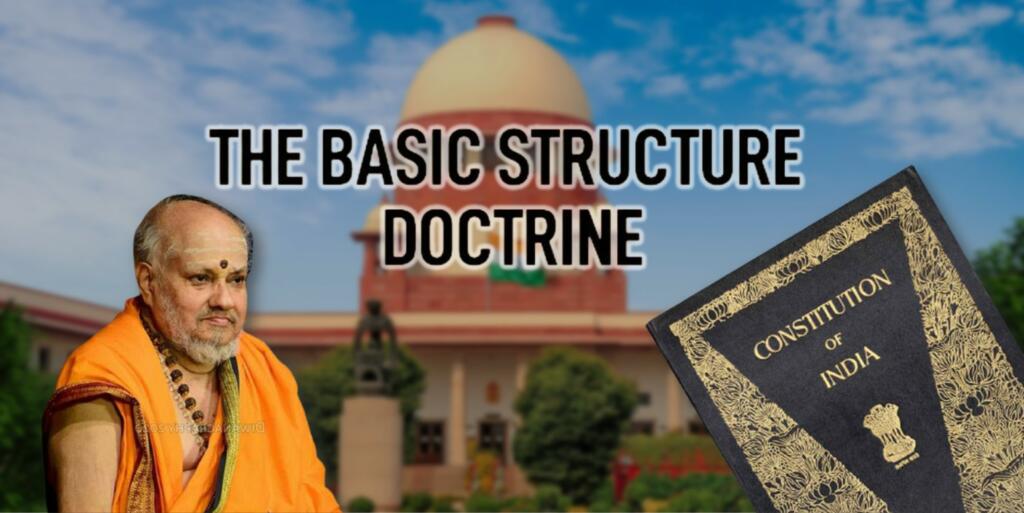The Constitution of India is acclaimed as the most unique, elaborate and world’s largest constitution. It is a well-documented piece that is revered as the holy book of contemporary India and brings out the spirit of our nationhood. The legal document was chiselled and drafted by the great political leaders and legal luminaries of the past, most of whom played an active part in the freedom struggle. The connotations of liberty, freedom and rights which are the ‘essence of Independence’ have therefore, been given utmost significance in the Constitution, as we moved out of the yoke of British Raj.
Even the Constitution evolves!
The Constitution, being an organic document, has to be kept in tune with the changing dynamic of time and society. Therefore, our forefathers incorporated Article 368 to provide a mechanic for amending the Constitution to further the national interests. Evidently, as we progressed in our democratic journey the constitution amending mechanism was subjected to the whips and fancies of the political masters.
Therefore, the judiciary was forced to intervene and ensure enough checks and balances were put in. The Apex Court in its most venerated judgment of Kesavananda Bharati vs State of Kerala settled the matter once and for all and provided the “Doctrine of Basic Structure,” which is considered to be the ‘Lakshman Rekha’ which the political class cannot obliterate.
Also read: 1st Constitutional Amendment: How Nehru sowed the seeds of communism
Factual Backdrop of the Case
The petitioner challenged the validity of the Kerala Land Reforms Act, 1963, but subject to the pendency of the case, the law was amended in 1971 and placed under the 9th Schedule. The laws under the 9th Schedule are saved from judicial scrutiny. Thus, the government calibrated the move so as to avoid judicial intervention in the matter by bringing in the 29th Constitutional Amendment Act.
The apex court allowed the petitioner to challenge the constitutional validity of the 24th, 25th and 29th Constitutional Amendment Act. The Supreme Court therefore, constituted a Special 13 Judges Bench to evaluate the constitution amending powers and the checks and balances imposed on the Parliament while exercising such rights under Article 368.
Dispute before the Supreme Court
The government of the time was of the view that the constitution amending powers of the Parliament under Article 368 are absolute and can be only undone by an Act of Parliament using the same power and not otherwise. That is to say, that the government contended that ‘land reform legislation’ challenged before the Supreme Court in the present case was not open to judicial intervention.
The government’s stance was that the said law was protected from judicial scrutiny by virtue of being placed under Schedule IX. Further, contention was that the law can only be changed by the Parliament using Article 368 and the judiciary is barred from intervening with the move of the government.
Also read: When Ram Manohar Lohia took on Nehru over the First Amendment and won
Era of 1970s: Conflict between the Judiciary and the Government
The decade between 1970-80 is an infamous chapter in the history of our democracy. Much of it was due to the authoritarian approach of the government. In the instant case as well, the position adopted by the government was motivated with the intention to bypass the power of ‘Judicial Review’ and establish legislative supremacy over the judiciary.
The judiciary however, did not deter from upholding Constitutional Supremacy and came up with this historic judgment which settled the debate centred around the power of judicial review on constitutional amendments.
Verdict of the Supreme Court
The Special Bench of the Supreme Court by majority of 7:6 overruled the Golak Nath’s verdict and held that the Parliament is bestowed with wide amending powers by virtue of Article 368 and it extends to all the provisions of the Constitution. But the amending powers are not absolute and cannot abrogate the basic structure or the architectural foundations of the spirit of the Constitution.
As regards to the scope of amending powers under Article 368, with respect to fundamental rights, the majority (7 Judges) held that there is inherent and implied limitation on the power of the Parliament. The majority view endorsed that the basic elements of the constitution cannot be obliterated with political might.
Whereas, the minority (6 Judges) opinion was that there is no implied limitation on the amending powers of the Parliament, but the power to amend does not include the power to abrogate the constitution.
The Supreme Court has therefore listed as many as six basic or rather essential features in this judgment that cannot be abrogated by the political class. These include:
- Supremacy of the Constitution;
- Objectives of the Preamble;
- Powers under Article 32;
- The Sovereign, Democratic and Republic structure;
- Unity and Integrity of the nation;
- Balance between Fundamental Rights and Directive Principles.
However, in the later cases, the number of basic elements was increased to seventeen, whereby the power of the Parliament under Article 368 could be kept under check. The detailed analysis of the judgment and the basic structure would be carried out in the subsequent publication.
Support TFI:
Support us to strengthen the ‘Right’ ideology of cultural nationalism by purchasing the best quality garments from TFI-STORE.COM
Also Watch:
https://www.youtube.com/watch?v=CJIi_SYbgUw
